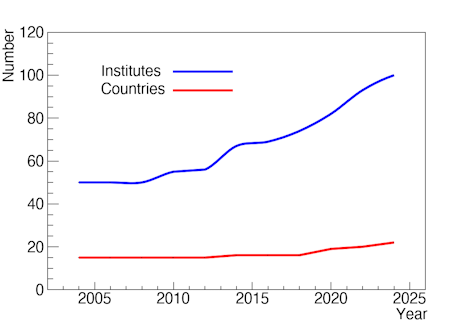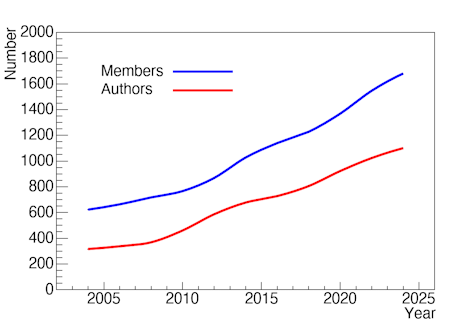In February 2024, the Ruhr-Universität Bochum became 100th institute to join the LHCb collaboration.
We have come a long way since August 1995, when a Letter of Intent was submitted for LHCb, the world’s first dedicated b-physics experiment at a hadron collider.
The beauty quark b and anti-quark b bound-state Υ was discovered at Fermilab in 1977. For many years afterwards, the study of beauty hadrons, composed of a b quark or its anti-quark b and other quarks, was dominated by experiments at e+e– colliders, including DORIS, CESR, VEPP and LEP. So called “fixed-target” experiments at hadron colliders in which beauty particles were produced in collisions of accelerated protons with stationary objects were limited in their scope because the rate of beauty particle production was small compared to production rate of other particles. Hadron colliders, on the other hand, produce beauty particles at much higher rate. Fermilab’s CDF and D0 collider experiments at the Tevatron, although not specifically designed to study beauty particles, took advantage of this opportunity and began producing interesting results in the 1990s. The BaBar and Belle experiments at the e+e– collider B factories were approved in 1993 and began taking data in 2000.
It was clear that the high proton-proton collision energy at the LHC would lead to a very high production rate of beauty particles. But how could high-precision experiments be carried out in this very difficult environment? At the LHC workshop in Evian in 1992 three b-physics experiments were proposed – COBEX, LHB and GAJET.
In June 1994, the LHC Committee decided not to approve any of the three individual experiments, but invited the interested parties to form a new collaboration to propose a single new experiment based on the collider mode to exploit the large bb cross section with a convincing trigger strategy. The choice of the collider mode was the right one, as the LHC would not have produced enough b hadrons in a fixed target setup, compared to the B-Factory and Tevatron experiments, which had exceeded initial expectations.
The Letter of Intent for LHCb was submitted in 1995 and the experiment was approved in 1998. The design of the experiment was re-optimized in 2003 with many important improvements. A year ago, a virtually new detector replaced the original one completing the installation of the LHCb Upgrade 1 detector. The LHCb collaboration has grown systematically over the past 30 years, as shown in the graphs accompanying this news, and now comprises 1677 members from 100 institutes in 22 countries. Throughout its history, the LHCb detector has also been consistently improved, taking advantage of technological developments. This will continue in the future. LHCb physicists, engineers and technicians are already working on an ambitious program to further improve the detector, called Upgrade 2, with the aim of integrating ∼ 300 fb−1 over the lifetime of the high-luminosity LHC.


